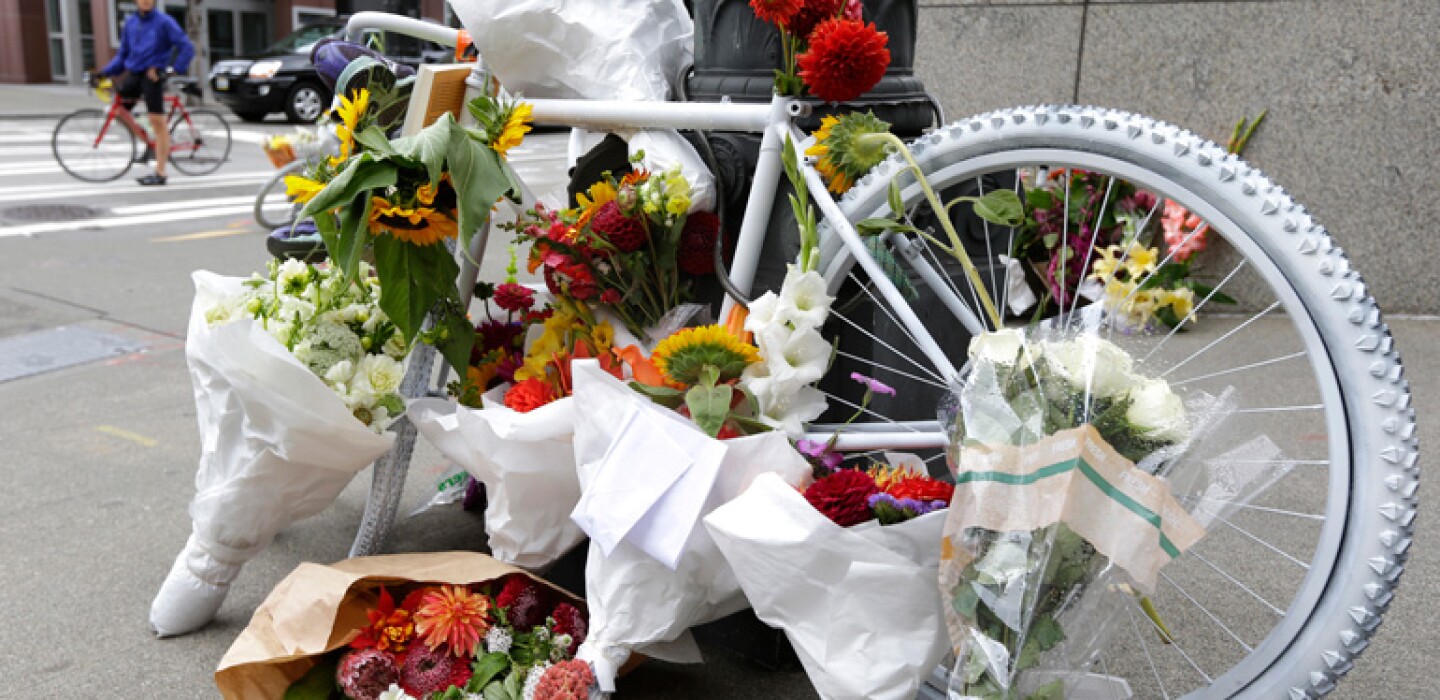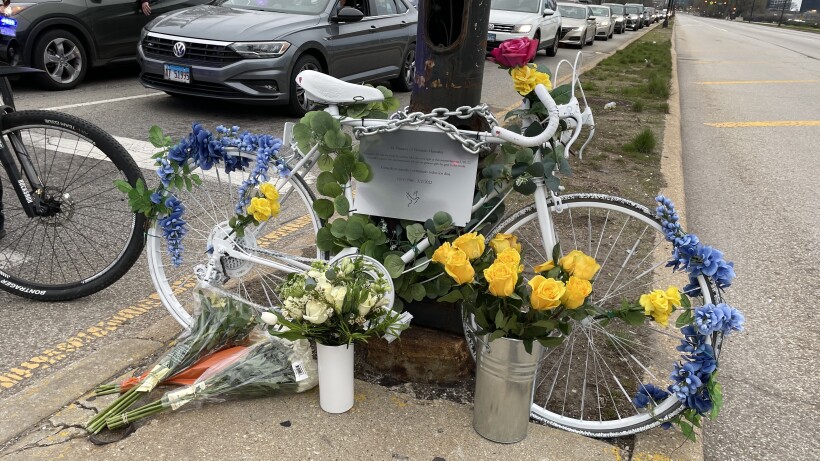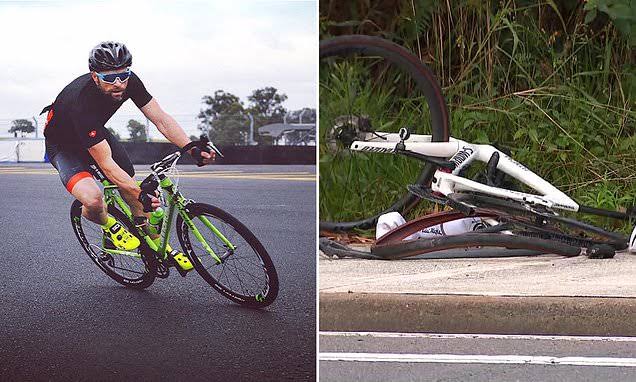One of my favorite shows, broke the single season record for most wins at last night’s Emmy Awards. Here’s what else you need to know today.
1. Chicago has seen just one bicyclist killed this year — but activists say that’s one too many
Before an August crash that left a 55-year-old bicyclist dead, Chicago had gone 10 months without a cycling death — the longest stretch since at least 2019, Kade Heather reports for the Chicago Sun-Times.
“Statistically, this drop appears too large just to be entirely good luck,” Joseph Schwieterman, a transportation professor at DePaul University, told the Sun-Times. “It’s not likely the fatalities will stay at this level, unfortunately, but this is encouraging.”
Some activists are guardedly optimistic about a decline in bike fatalities. Others contend the number of all traffic deaths in Chicago — cyclists, motorists and pedestrians — could be reduced to zero with the right improvements.
Installing a citywide protected bike lane network, adding more speed bumps and other traffic calming measures, and lowering the speed limit are among the changes that safety advocates say are paramount to reaching the goal of eliminating traffic deaths.
The effort comes amid a reported 119% increase in bicycling in Chicago between 2019 and 2023 — and advocates say even more people would choose to bike if they felt safe doing so. [Chicago Sun-Times]
2. More arts classes in CPS schools is an easy sell. Paying for it and finding teachers is the real feat.
Arts education in Chicago is determined by a school’s size and, critically, by how much an individual principal prioritizes it.
The number of classes has improved since Chicago Public Schools created an expansive arts plan in 2012, but nearly half of all schools still have only one art teacher — and some positions aren’t yet filled, CPS data show.
In ongoing union contract negotiations, “more art teachers” is a rallying cry. The Chicago Teachers Union wants the district to agree to a centrally funded cadre of art teachers — like they do with dance or music teachers — who can travel among several small schools. At the same time, CPS’ director of arts education is spearheading a new plan to replace the existing 12-year-old blueprint.
But taking arts education to this next level means the district must confront challenges like funding and finding certified teachers. [WBEZ]
3. What we know about former President Donald Trump’s second apparent attempted assassination
The suspect, whom officials identified as Ryan Wesley Routh, has a lengthy criminal record and recent fixation on global politics, particularly Russia’s war in Ukraine, NPR reports.
Routh was taken into custody yesterday and charged today with federal firearms crimes. He will remain in custody until his arraignment on Sept. 30.
As NPR reports: “Local authorities said a U.S. Secret Service agent who was stationed one hole ahead of Trump on the Trump International Golf Club West Palm Beach spotted an AK-style rifle sticking out of a fence. The suspect holding the rifle was hiding in the shrubbery some 300 to 500 yards away from the Republican presidential nominee.”
An agent fired and the suspect dropped the rifle before fleeing in a car.
The possible attempt on Trump’s life is the second in the last nine weeks. [NPR]
4. An Illinois man’s 3D-printed guns have been linked to terrorists, drug dealers and militia members around the world
Known as “Ivan the Troll” and other aliases, 26-year-old Illinoisan John Elik has become one of the most important individuals in the international 3D-printed gun industry, The New York Times reports.
Though Illinois restricts the sale and manufacturing of homemade guns to firearm dealers and manufacturers, Elik is a licensed gun manufacturer — so he doesn’t seem to be violating the law.
The FGC-9 3D-printed gun was designed to arm as many people as possible, and Elik has been promoting it through YouTube videos, social media and podcasts.
“Civilians need assault weapons because having a weapon made for killing people is very important for self defense,” one post linked to Elik read, adding, “If it’s made for killing people quickly and easily, even better.” [New York Times]
Meanwhile, a trial to determine if an Illinois assault weapons ban is constitutional started today. [WBEZ]
5. Saxophonist Ernest Dawkins discusses the neighborhood sounds that made him
Chicago has one of the most rich and lasting cultures around jazz in the world. The city’s annual Jazz Fest in Millennium Park hosts big names in the genre. But there’s another mega-event in the Chicago area to get your fix in the fall: The Englewood Jazz Festival, my colleagues Erin Allen, Justin Bull and Sofie Hernandez-Simeonidis report.
The celebration is led by Ernest Dawkins, a saxophonist, composer and leader of several ensembles. Dawkins grew up in the Englewood area in the ’60s and ’70s, where he said blues was all around the neighborhood.
Dawkins’ interests in instruments wandered from bass, to percussion and eventually to saxophone.
“What made me play saxophone was some guys moving on my block from the BAG organization, which is the Black Artists Group of St. Louis,” he told WBEZ. “They happened to move on my block. They would play all night, and I knew the music.” [WBEZ]
